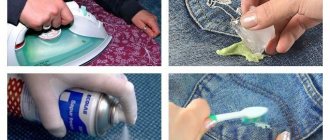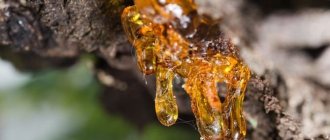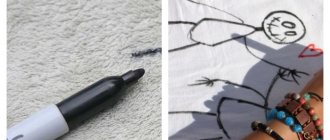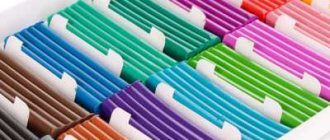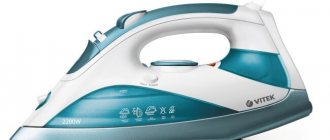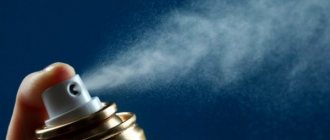How and with what to wash grease from clothes at home. Improper removal of such stains on things can lead to serious consequences. Household chemicals contain strong reagents that are not suitable for all fabrics.
Delicate materials require special handling. In order not to spoil the thing, you need to use folk remedies.
- Rules for removing grease stains
- How to wash grease from clothes?
- How to remove from metal
- Useful tips
How to wash grease from clothes
Stains from technical grease can be removed using various means. The most commonly used are ammonia, white spirit, acetone, and ethyl alcohol. Usually the procedure does not take much time. The cleaning composition can be left on the fabric for no longer than one hour. After using solvents, the affected item of clothing should be washed in a soapy solution. Another mandatory step is rinsing in running water. It will be useful for every housewife to know how to wipe grease off clothes.
Petrol
Using it you can remove fresh dirt. The cleaning agent must be purchased at a hardware store. After using the solvent, the damaged area must be treated with ammonia. To consolidate the effect, the procedure is repeated using denatured alcohol. Then all that remains is to wash the item in the usual way. Gasoline can be mixed with soap shavings. Cotton pads are used to apply the finished mixture. If solvent gets on a clean cloth, it may streak.
Turpentine
It needs to be poured into a bottle and heated using a water bath. After such preparation, the solvent is carefully applied to the resulting stain. The composition should be kept on the fabric for 40-60 minutes. Then it is treated with ammonia. The last step is to wash the affected area on the clothing in a soapy solution. Turpentine is classified as a flammable material, so safety precautions must be observed when using it. This substance copes well with both the stain itself and the stains that remain after its removal.
Vinegar
To prepare the cleaning composition, you will need warm water (500 ml) and table vinegar (2 tbsp.). A cotton pad is moistened in the resulting mixture, which is then used to remove dirt. If the stain is too large, the volume of water and the number of tablespoons of acetic acid must be doubled. You need to soak the item of clothing in this solution for 2-3 hours. The next step should be rinsing and washing normally. To increase effectiveness, you can add bleach or stain remover to the cleaning composition.
Car shampoo
It is present in the standard kit of every driver and auto mechanic. Car wash products can be purchased at a specialty store. After applying the cleaning composition to the stain, the item should be left alone for 30-40 minutes. To enhance the effect of the shampoo, you can use a brush. Processing ends with washing. In this way, you can eliminate both fresh and old grease stains.
Stain remover
When choosing what to wash grease with, you should focus on the delicacy of the fabric and the complexity of the contamination.
When using the stain remover, you must follow the instructions that come with it. The cleaned fabric should be rinsed in warm running water. This method is used to remove fresh grease stains. To remove old stains, you need to select more effective products. We recommend:
Antibacterial detergents for washing clothes in a washing machine
Particular attention should be paid to the consistency of the cleaning composition. Powdered ones are used as a base for preparing a mushy paste.
Products sold in liquid form do not require prior preparation. When choosing formulations, preference should be given to stain removers that are used to remove oil and grease stains.
Dishwashing liquid
One of the most popular methods used to combat grease stains. Dish gels are good at degreasing stained surfaces. To achieve the desired effect, the composition is left on the affected item for half an hour. The liquid is washed off using running water. The same effect can be achieved by using talc, table salt, and crushed chalk.
Margarine or butter
In the absence of all the above compounds, improvised means are used. In this situation, butter or margarine will do. The product should be placed on the stain in a neat, even layer. It should remain on the fabric for about 30 minutes. Thanks to animal fats, the solid oil will soften. The next step is to remove the stain using dishwashing gel, tar or laundry soap. At the last stage, the fabric is rinsed with running water.
Petrol
Moisten the problem area with gasoline, give the grease time to acidify, and then wash the item in the usual way. Gasoline drained from the tank of your car is not suitable for this; you will need purified gasoline - for lighters or aviation grade. The acrid smell of fuel is very persistent. Washing with powder and scented conditioner will have to be repeated 2-3 times. After a few days of airing the item, the smell goes away.
If the stain cannot be removed, resort to combined methods of removing stains using several means:
Modern formulations of increased efficiency
If for some reason you do not want to use traditional methods, use modern means for removing difficult stains.
Method 1
- Buy any stain remover you like.
- Apply it to the stained area.
- Leave it on the fabric for the time indicated in the instructions.
- Take a toothbrush.
- Rub the area where you applied the stain remover.
- Rinse the product in cold water.
- Repeat the procedure as necessary.
- Wash the entire item as usual.
Method 2
Car shampoo is also an effective assistant for combating traces of technical oil. Use it this way:
- Apply car shampoo to the problem area.
- Leave it on for 30 minutes.
- Rinse the fabric with cold water.
- Wash the product as usual.
For those who do not trust dubious chemicals or traditional methods for removing such contaminants, it is recommended to use more effective formulations. One of the most frequently used and popular is car shampoo.
When using this shampoo, no special knowledge or skills are required:
- Apply a little onto the fabric and leave for a few minutes.
- Next, you should rinse your favorite item under running water.
- If the dirt still does not disappear, it is recommended to repeat the procedure. Only the second time you need to rub the stain a little with a damp sponge and also rinse under running cold water.
- Afterwards, you need to wash the clothes by hand with washing powder or other cleaning agent.
It is best to use a high-quality stain remover to remove traces of grease.
If traces of grease still remain, the procedure can be carried out again.
Car shampoo will do a great job even with traces of gasoline. It should be used as follows:
- Apply the product to the problem area on clothing.
- Leave the shampoo on the contaminated area for half an hour.
- Rinse the product in cold water.
- Wash the damaged item.
We told you how to remove grease. We hope that one of the methods we have given will definitely help you get rid of stains. And in order not to needlessly expose your clothes to danger, it is better to wear old things to the workshop that you are not afraid of getting dirty.
For those who do not trust folk remedies, or have not received the desired result from using them, there are the following approaches:
Stain remover. We take any stain remover that is suitable for a specific type of fabric. Apply the composition to the contaminated part of the clothing and leave for as long as indicated in the instructions. After this, take a toothbrush with soft bristles and lightly scrub the area where the profile product was applied. Next, rinse the fabric in cool water and, if necessary, repeat the manipulation from the very beginning.
Car shampoo. Quite an unusual, but very effective option for influencing solid oil. We take a little shampoo, apply it without diluting it to the traces of technical oil and leave for half an hour. There is no need to rub anything; after the specified time, we simply rinse the product in cool water. If the stain still does not come off, then apply the shampoo to a still damp cloth and this time rub it lightly to form a small amount of foam. We wait another half hour and again rinse the item in cool water. After such exposure, the formation must go away, otherwise nothing can save the tissue.
Useful tips
When removing oil stains, you need to follow a certain sequence. To make the washing process easier, you must first degrease the fabric.
Degreasing
Solid oil is a fatty substance that is intended to lubricate and protect metal parts from corrosion. To remove it from the surface of the fabric, a product used to wash the court is suitable.
Steaming
You can remove oil stains without using strong reagents. It is enough to apply turpentine to the contaminated area and leave the fabric in the steam for 5 minutes.
Why do you need to remove stains from the edges to the center?
If processed incorrectly, residues of grease remain on the fabric. Therefore, the stain must be cleaned from the periphery to the center. It is not recommended to apply significant force, as this can damage the fabric.
How to rinse and dry correctly
After washing, it is recommended to rinse clothes in cool water. Delicate fabrics require special care. The procedure must be carried out carefully to avoid damage to the fibers. The drying process should take place away from heat sources. Do not keep clothes near the battery.
Wash in warm water after cleansing
After treatment, you need to wash things in warm water. A detergent is added to the solution to remove oil stains.
You need to wash your jeans from the inside out
Thick denim fabrics must be processed from the wrong side. Turn the garment inside out and place a piece of fabric on the right side. In this way, further spread of the lubricant can be prevented.
These are probably all the options for removing grease stains that can be effectively used at home.
Removing grease stains from clothes
The composition of a specific substance, grease, includes many different components. Due to their presence, solid oil is very quickly and firmly fixed in the fibers of the fabric. Therefore, it is quite difficult to remove such oil contamination. In order to eliminate the stain, you should follow the preliminary recommendations, and then proceed to more drastic measures.
Methods for removing grease stains from the surface of clothing
There are many effective methods to eliminate this problem. Let's look at a few commonly used detergents:
- Ethanol. The drug is effective not only for medical purposes, but also for household purposes. It is often used to remove stubborn stains. A cotton pad should be moistened with alcohol and applied to the area damaged by the oil mass. Let stand for about an hour and wash with washing powder.
- Acetone or nail polish remover. It works on the same principle as medical alcohol. You need to moisten a piece of cotton wool in the liquid and apply it to the spot. Leave the clothes in this state for 20 minutes, and then begin to carefully remove the stain from the edges to the center. Don't forget to change the cotton wool periodically.
- Dishwashing gel. A small amount of the substance should be applied to the stain. Leave for 30-40 minutes until completely absorbed. Then rinse with running water. Next, you should wash the item with powder or liquid detergent.
- . This drug must be used according to the instructions. Apply a little liquid to the oily area and leave until it is absorbed into the fabric. Next, rinse the item with running water and wash as usual.
- . It is used on the same principle as stain remover. The main thing is not to overdo it with the amount of substance used.
Gasoline, turpentine, vinegar, glycerin
These substances are used to combat both fresh stains and old ones. Despite their unsafe composition, they can very easily wash grease from clothes:
- Turpentine - should be preheated in a water or steam bath. Not on direct fire! Next, you need to moisten a sponge or a piece of soft cloth with it and wipe the stained area. You should rub from the edges of the spot to the center. If you do it the other way around, you can smear the dirt, then removing it will be much more difficult. Afterwards, you need to thoroughly wash the item and air dry it so that the unpleasant odor disappears as quickly as possible.
- Purified gasoline - apply a small amount of liquid to a cloth and wipe the stained area on the clothing with it. Next, wash the item well with washing powder.
- Vinegar - you need to dissolve 3 tablespoons in 500 ml of clean water. Then you should moisten a cotton swab or cotton pad (depending on the size of the stain) in this solution and wipe off the stain. Afterwards, wash the item thoroughly with washing gel.
- Glycerin - apply a thin layer of the drug to the stained area, leave for 20 minutes until completely hardened. Next, remove the remaining glycerin with a napkin and wash the clothes with washing powder.
Features of cleaning materials
Before you start cleaning things from greasy stains, you need to take into account that such contaminants are quickly absorbed.
For this reason, action should be taken as quickly as possible. The most difficult stains to remove remain after hydraulic or freon oil gets on clothes. Due to their chemical structure, these substances penetrate deeply into matter, eating into the inner layers of the fabric. These contaminants can only be removed using aggressive means. The product must be prepared in advance:
- if the stain is fresh, then remove excess oil with a napkin;
- You cannot rub the contaminated area with napkins, you need to gently blot it, otherwise the dirty mark will increase in size;
- clean the item from dust with a brush;
- place the product on a horizontal surface so that the stain is on top;
- place several layers of cotton cloth under the contaminated part;
- Before starting work, test the selected product on the inner seam to avoid damaging the fabric.
Depending on the density and type of material, intensity of contamination, color of the product and other parameters, there are different cleaning methods:
- Cleaning jeans and jackets (down jackets) is complicated by the fact that their structure is very dense. Lubricating oils are almost impossible to remove with conventional washing powders; bleaches can completely ruin the item if used carelessly. When cleaned with a brush, these items of clothing may become thinner and also lose their properties. Because the fabric is dense, liquids are absorbed slowly. This means that stains that look fresh are covered (without rubbing!) with dish soap, then the dirt is removed with cloth napkins and the clothes are washed as usual.
- Dry mustard helps remove oil from the surface of jackets. It is soaked to make something like porridge, applied to the contaminated area for 30 minutes, then the dirty item is rinsed in warm water. Even thick clothes can be cleaned with kerosene, which is poured onto the surface of the stain and after a few seconds they begin to push it towards the center of the stain.
- Jeans are affected by oil more often than any other material, and it is very difficult to remove such stains. It is recommended to start processing by applying a solvent, and do not rub too hard, otherwise the surface will fade. Then sprinkle the jeans with washing powder, spray with water and rub with a brush (vigorously, since weak movements will not get rid of stains). Special sprays can also remove oil stains from jeans, but only if the stain is not old.
- The most energetic preparation that is suitable for jeans, but absolutely not suitable for Bologna fabric, is a combination of ammonia and turpentine. Be prepared for the fact that the item may deteriorate irrevocably! If you still want to take a risk, apply the mixture to the clog and clean it with a soft cloth. Then you will need several hand washes with changing soap solution. Even with complete success, a persistent unpleasant odor may remain.
- It should be noted that jeans and outerwear may not be free of oil in all cases. Thus, the thinnest materials with the necessary processing will simply collapse and lose their appearance. The most universal reagent is gasoline for lighters, which is used to soak a couple of napkins applied from different sides. After 30 minutes, the oil will remain only on the napkin.
- Oil stains can be removed from white or very light pants by treating with oxygen bleaches. Considering their great activity, strictly follow the instructions, and if the product used does not help, do not try to experiment further, contact a professional. When cleaning bolognese cloth, the inside of the stain should rest on a board or hard cardboard. When rubbing the surface of the stain, never apply excessive pressure.
- Bologna can be washed only at temperatures no higher than 40 degrees, and by hand, and it should be wrung out more carefully. Ironing such clothes after cleaning is unacceptable; they should only be dried at room temperature away from sunlight and heating devices. It is better not to clean bologna with brushes; as a last resort, use the least hard ones and brush smoothly.
How to wash grease from clothes at home
What you will need
In order to return your clothes to cleanliness, you will need:
- paper napkins;
- clean dry towels;
- tablet;
- individual protection means;
- stain remover;
- solvents;
- vinegar;
- butter;
- washing powder or liquid detergent, laundry soap;
Stain removers
A large number of specialized products are now produced to combat stains of various origins, including grease stains. They are available in the form of paste, gels, stick, bar soap or spray.
Solvents
When there are no special products at hand, you can use one of the solvents.
Turpentine
This is a mixture of essential oils from various parts of pine trees. It is used both for medicinal purposes (turpentine baths) and in the household - it removes stains of various origins well.
- You need to apply a few drops of heated turpentine to a cotton pad and treat the stained area with it.
- After this, drop ammonia onto the fabric and rub.
- Wash the entire product in a washing machine or by hand with powder.
Petrol
To remove greasy traces from grease, purified gasoline is used. You can buy it at a hardware store.
- Apply gasoline to the dirty area and leave until completely dry.
- Then wipe with a piece of cotton wool soaked in ammonia and wash.
You can also prepare a mixture of gasoline and laundry soap shavings. Apply the mixture to the soiled fabric and leave for two hours, then rinse and wash.
Kerosene
Soak a cotton pad in kerosene and apply it to the stain. After drying, rinse and wash. To ensure that there are no streaks left on the fabric after using gasoline and kerosene, you need to wipe it with a cotton pad moistened with denatured or medical alcohol.
Vinegar
You need to take table vinegar (5-9%) and apply it to a cotton pad. Wipe the stain from the edge to the center. Then wash the item with powder.
To prevent a specific smell from remaining on your clothes after using these products, you need to rinse the items very thoroughly, wash them and add fabric softener to the final rinse water.
Delicate fabrics
For thin fabrics (even for and) glycerin is suitable. It is sold in pharmacies or hardware stores.
The product is soaked for half an hour in a mixture of water, ammonia and glycerin (mix in equal proportions), and then thoroughly rinsed and washed.
Car shampoo
Surfactants, the content of which in car shampoos is up to 30%, break the pollution into small particles and prevent them from sticking together. Car shampoos have good degreasing properties.
- You need to dilute the shampoo with a small amount of water and apply generously to the stain.
- If the item is almost completely dirty, you can soak it completely.
- Leave for half an hour and wash.
One of the listed remedies will definitely help remove grease stains at home and without much expense. Follow safety precautions when working with flammable liquids and use personal protective equipment.
A grease stain is one of the stains that is not so easy to remove. This is especially known to people who are faced with the repair of equipment and cars, and their significant other. It would be good if the work was carried out in a change of clothes. But if your favorite clothes are dirty, then you need to know what actions are needed in this case and how to wash the grease.
Solid oil is a good lubricant for components and assemblies
Useful tips
When cleaning from grease stains, there are specific secrets. They will help increase the effect of the procedure and accelerate the action of fat-dissolving reagents.
Degreasing
Since the basis of grease is fat mass, it is necessary to first remove traces of it on clothing. Kitchen dishwashing detergent will work for this. A small amount of gel is lightly rubbed into the fabric, then washed off with water. And it will be easier to remove residual traces of grease.
Steaming
Steam combined with solvent helps remove stains faster than conventional methods. To do this, moisten the problem area with warm turpentine, then place it over steam for 5 minutes.
From edge to center
It is very important to wipe the stain in a certain way - from the periphery to the center. Significant efforts should not be made so as not to damage the fabric and rub fat into the fiber structure.
How to rinse and dry correctly
In most cases, rinsing is done with plenty of cool water, without applying much effort. Delicate fabrics (silk) require special handling and should be dried away from heat sources.
Wash in warm water after cleansing
Treatment in any composition is completed by washing in warm water with the addition of detergent. Thus, the consequences of the penetration of grease and the remaining stains from the fabric are completely eliminated. If this procedure is not followed, particles of dissolved fat will remain on the fibers, as well as the grease itself.
You need to wash your jeans from the inside out
For thick denim fabrics, the inside-out processing method is used. To do this, they are turned inside out, and a small piece of light cotton fabric is placed on the front side.
This is necessary to prevent the stain from expanding. When wiping grease, try not to put much effort: it is better to gently, periodically changing the swab, systematically wipe the stain from the surface.
Solid oil is a technical material consisting of many components. It is designed to provide protection and extend the service life of various mechanisms. Many car enthusiasts who don’t know how to wash grease from clothes often face the problem of selecting cleaning products. To combat stubborn stains, you can use both improvised means and household chemicals.
The complexity of the stains is explained by the fact that the oil mixture firmly eats into the fabric fibers of the jacket, trousers and other things. When deciding what you can use to wash grease from clothes, you need to be guided by the type of material, the size of the dirt and the type of lubricant. It can be medical, greasy and synthetic, so no one is safe from grease stains. If you can’t deal with them at home, you’ll have to go to the dry cleaner.
Effective ways to get rid of diesel smell
Diesel fuel is a product of oil refining. The liquid has an unpleasant odor that is difficult to get rid of. Regular washing is not enough here, so you have to resort to the help of other potent products. Moreover, even if you manage to wash off the stain itself, the aroma of diesel fuel still persists for a long time. Special techniques can help in this case.
Extraction gasoline
One of the best remedies to help get rid of the smell of diesel fuel on clothes is purified gasoline. It is also called extraction. This liquid can be purchased at household chemical stores or construction departments.
The procedure for using extraction gasoline is as follows:
- Damaged products are soaked in purified gasoline for 40 minutes. In this way, the dirt itself and the aroma from it are removed.
- Wash damaged items in an automatic machine or by hand with high-quality washing powder.
- Rinse the textiles several times using conditioner.
- Dry outdoors or in a well-ventilated area.
Lemon juice and sunflower oil
In this case, the interaction of these two products displaces diesel fuel from the fibers and neutralizes its aroma. The product is applied only to the affected area of tissue. To do this, make a solution of 100 ml of sunflower oil and 200 ml of lemon juice. Treat diesel stains with the resulting mixture, rubbing the liquid with a sponge. Textile products are left for 10 hours for the product to take effect. Then the items are washed by hand with laundry soap.
Bleach or acetone
These products cope quite well with diesel fuel stains. Treat the stained area on clothing with acetone or white spirit, applying the product with a rag or sponge. When the stain disappears, wash the items with high-quality washing powder. You can use regular bleach instead of acetone.
Important!
Bleach can be used if the stain remains on light-colored clothing. Items made of colored fabric will become discolored from this treatment.
Soda Ash
Another way to remove the smell of diesel fuel from things is to treat them with soda ash. It will effectively remove stench and greasy traces from petroleum products. To prepare fabric items for washing, they are soaked in a solution of 5 liters of water and 3 tbsp. l. soda ash. The holding time in this case is 3 hours. Then the items are wrung out and put into the washing machine. In this case, for washing it is better to use high-quality washing powder and an additional rinse with conditioner.
Baking soda with table salt
In this case, soda is needed to rid things of absorbed diesel particles, and salt neutralizes the unpleasant aroma. To remove the smell of diesel fuel from clothes, dissolve 100 g of soda and salt in 5 liters of water and soak the affected items in this liquid for 3 hours. Then the clothes are taken out and washed in the usual way. At the same time, conditioner must be added to the final rinse water.
Mustard
Another way to effectively remove diesel smell from clothes is to wash them with mustard powder. In this case, add 4 tbsp to the washing powder solution. l. dry mustard powder and wash the clothes by hand. After the stains have disappeared, the clothes are washed again with only washing powder without adding mustard.
Important!
This method allows only hand washing. You cannot put mustard in the washing machine.
Detergents
It is not always possible to purchase extraction gasoline. Therefore, ordinary dishwashing detergent becomes an available means for removing the smell of petroleum products. It is diluted in water and the soiled product is soaked in this solution overnight. Then the items are washed in the usual way with high-quality washing powder and rinsed with conditioner.
Isopropyl alcohol
This product works well against greasy stains and unpleasant odors if the product stinks of petroleum products. Isopropyl alcohol is diluted with water in a ratio of 1:5. Things with diesel stains are soaked in the resulting liquid for 1 hour. Then wash the clothes thoroughly in the washing machine or by hand and rinse with conditioner.
Traditional methods
An extensive group of “everyday products” that may be needed immediately and urgently. These include vinegar, synthetic detergents (soap), alcohols and others. It is possible to use combinations of several methods. In the fight to save clothes, all means are good.
Vinegar essence
To wash a grease stain from clothes, you will need table vinegar (essence). The recipe is simple: mix 3 tablespoons with 250 milliliters of water, wet a cotton swab (soft cloth), which will be used to clean the affected clothing. The fabric is carefully soaked on both sides, placing tampons soaked in vinegar on top and bottom. As soon as the composition penetrates deep into the fibers, wipe off the remaining stains with soft, circular movements. In conclusion, all that remains is to thoroughly wash the cleaned item.
Butter
The original method, confirming that the proverb “knocks out a wedge with a wedge,” also works in relation to heavy pollution. You will need:
The whole procedure is divided into 2 stages. The first is to saturate the stain with a layer of oil. The second is to eliminate the consequences of “oil therapy”. And here you will need all possible fat-removing agents. White spirit and acetone usually work well. After cleaning is completed, washing occurs. There is no way to do without it.
Methods for removing grease stains from the surface of clothing
What and how to remove stains from this substance? Products such as gasoline, acetone, vinegar, glycerin, white spirit, turpentine, oil, margarine, dishwashing gel or car shampoo are excellent for this purpose.
Rice. 2 - Grease removers
Vinegar
Dissolve 2-3 tablespoons of the product in 500 ml of water, soak a piece of cotton wool in the solution. Rinse the dirt from the edges to the center, wash with washing powder.
Margarine
The fats in this product will penetrate the grease and soften it - it will be easier to remove the black stain. Apply margarine evenly to the stain, leave for 1-2 hours, remove any residue with a clean cloth. Treat the area with turpentine, laundry soap or dishwashing gel. Then the product can be washed by hand with stain remover and powder in water at 40-60 degrees. It is not recommended to use water at a higher temperature - fat may remain on the fabric.
Car shampoo
Used for quick degreasing. Apply car shampoo to the contaminated material, leave for 40 minutes, rinse with running water and wash by hand with washing powder intended for greasy stains.
Gasoline or kerosene
Solvent cleaning is only suitable for natural fabrics. Take aviation gasoline, apply it to a clean cloth, and wipe off the dirt. Remove old stains with ammonia, wash the item and dry it.
Turpentine
Grease stains can be removed with this substance without leaving a trace. Heat the turpentine in a water bath, soak a cloth in it, and wipe the dirt from the edges to the center. Remove stains with ammonia, wash and dry the item. You need to be very careful when cleaning things with turpentine.
Rice. 3 – Cleaning stains with turpentine
Ethyl alcohol
It will help remove almost any stains. Soak the contaminated material in ethanol and leave for an hour. Wipe with ammonia, machine wash with powder.
Ammonia
It will help remove marks in combination with glycerin. Dilute them in equal proportions. Dissolve with water, immerse the soiled clothes in it, and leave for half an hour. Rinse thoroughly in cool water or machine wash.
Acetone or white spirit
Rub traces of dirt on shoes, trousers, jeans, coats, down jackets, shirts, robe, sweaters or other clothing with a swab soaked in these substances. Leave for a couple of minutes, wash with your own hands in warm water with added powder. Remove stains carefully - these folk remedies can “corrode” the fabric.
Ammonia
Soak unnoticeable diesel fuel stains on overalls with undiluted ammonia. Leave for 3 hours, wash off the residue with soap, and rinse in warm water. Then put your clothes in the wash. To remove stains from dark or black things, combine ammonia and tea leaves in equal proportions, and brush off oily marks with a brush. If you use glycerin for cleaning, apply it to the stained area, leave for 15-20 minutes, wash the clothes with washing powder with the addition of a couple of drops of ammonia.
Traditional methods
An extensive group of “everyday products” that may be needed immediately and urgently. These include vinegar, synthetic detergents (soap), alcohols and others. It is possible to use combinations of several methods. In the fight to save clothes, all means are good.
Vinegar essence
To wash a grease stain from clothes, you will need table vinegar (essence). The recipe is simple: mix 3 tablespoons with 250 milliliters of water, wet a cotton swab (soft cloth), which will be used to clean the affected clothing. The fabric is carefully soaked on both sides, placing tampons soaked in vinegar on top and bottom. As soon as the composition penetrates deep into the fibers, wipe off the remaining stains with soft, circular movements. In conclusion, all that remains is to thoroughly wash the cleaned item.
Butter
The original method, confirming that the proverb “knocks out a wedge with a wedge,” also works in relation to heavy pollution. You will need:
The whole procedure is divided into 2 stages. The first is to saturate the stain with a layer of oil. The second is to eliminate the consequences of “oil therapy”. And here you will need all possible fat-removing agents. White spirit and acetone usually work well. After cleaning is completed, washing occurs. There is no way to do without it.
Laundry soap and washing powder
You can try scrubbing the stain with washing soap or powder. You need to carefully soap the dirty area so that the grease and cloth completely absorb the cleaning solution.
When using powder, it is lightly moistened with water, and when a paste forms, it is applied to the dirt.
Petrol
Special purified gasoline (and not the kind that is poured into the car tank) successfully removes contaminants of varying degrees. A clothes brush or soft cloth is used, with which the composition is rubbed into the fabric. If necessary, the operation is repeated several times, then the item is immediately washed in warm water (preferably in a washing machine).
Car shampoo
By the nature of their action, car wash products are capable of eliminating a variety of contaminants. You will need a little concentrated shampoo; pour it onto the area stained with grease. There is no need to rub or treat the item in any way. After half an hour, the result is determined. If it doesn’t work, repeat it all over again. All that remains is to rinse the fabric thoroughly in running water.
Glycerin and ammonia
Both components are taken in equal quantities, mixed, and diluted with warm water. The finished reagent is used as a composition for soaking stained jeans and work coats. Next, you just have to be patient for 40 minutes, then rinse the clothes. Glycerin cleaning is recommended for delicate silks.
How to use combinations of remedies for difficult cases
For advanced spots, it is permissible to use combined approaches. But only sequentially, not simultaneously. One of the methods should work. Before using radical agents, their effect is checked on a small area, since under the influence of chemicals the fabric can change color, texture, and become unusable. Some materials are processed from the inside out.
The following are suitable as combination products:
When some method (gasoline) does not work, you can try using turpentine after it evaporates.
The main thing is not to bring the situation to a critical state, when the tissue begins to creep away from aggressive chemicals.
Remove from clothes
All machine oils are close in chemical composition to fats. When removing, it is necessary to take into account the properties of the tissue and the time of appearance of fatty traces. Depending on this, the appropriate cleaning option is selected. Always have brushes and wipes ready.
You will also need soap and warm water to get rid of streaks. Clothes will have to be washed by hand or in a machine, so the powder should be on hand. Acetone or white spirit will help remove bitumen stains on clothes made from natural materials. Apply the selected option using a cotton pad to the stained area, then wash the item thoroughly.
Remove, wash gasoline
You can remove gasoline stains on clothes using improvised materials that are found in every home:
Attention! Remember that any composition noted above must be used from the wrong side. Rub the dirt from the edges to the middle
How can you wash grease?
Contaminants from grease are difficult to remove. There are several proven remedies that will help get rid of technical oil:
Remove from jacket, jeans
A mixture of sunflower oil and lemon juice will help get rid of fuel stains on your jacket. Mix the ingredients in equal parts. Apply to stains. After half an hour, brush the area. Then wash the clothes with laundry soap and hot water.
Information.
A regular stain remover will also help get rid of diesel fuel stains, but in this case the product will have to be washed 3-4 times.
An iron and a few sheets of paper will help remove diesel stains. Wash the product in advance. Place a piece of paper on each side of the garment. Heat the iron and iron the stained area. There will be a trace of oil on the paper. Continue until the stain disappears.
Most often, jeans suffer from fuel stains. Use lemon juice to remove dirt. It can be used to remove both fresh and old stains. Apply the product to the affected area and leave for 20 minutes.
Gasoline can also help remove traces left by diesel fuel.
Apply it to the dirt, then wipe the area with a clean cloth.
Work carefully. After removing traces of fat, wash your jeans thoroughly.
On light-colored material, the fat trace is especially noticeable. An ammonia solution will help get rid of it.
Mix 20 ml of product with 150 ml of water. Soak a piece of cotton wool in the liquid and wipe the stained area.
Continue cleaning until the stain is gone.
The nature of solid oil stains
A grease stain on jeans or a jacket is the remains of a grease, widely used for preserving mechanisms and processing certain parts. From a chemical point of view, grease is a product of mixing thick industrial oils and calcium soap. Color – from yellowish to rich amber. It cannot be washed off with water, this is an advantage for mechanisms and a disadvantage for humans.
All solid oils are divided into:
- fatty origin;
- synthesized.
Compositions are used in consistency from liquid to jammy. This group also includes fat-based graphite lubricants.
It is clear that if it gets on clothing, it is difficult to remove the remaining stain. To such an extent that after processing the fabric structure and dye can be destroyed.
How to clean a floor covered with parquet oil
There are parquet floorings on which special parquet oil is initially applied as a protective layer. It is absorbed into the wood, preserving its natural beautiful appearance. This type of parquet is most susceptible to serious stains, since in most cases any foreign substance that gets on it and stays for some time gradually begins to be absorbed, and it is extremely difficult to remove it. It is extremely rare that an absorbed stain can be removed and the parquet floor cleaned of it. Much more often, such a case is solved in a radical way - repair. If the tragedy occurred relatively recently, and the stain did not have time to go deep into the wood, you can use alcohol-containing solutions or detergents for washing floors or dishes. The best products to dissolve fat are products like Fairy or liquid Pemolux. The powder can be diluted in water and “soak” the stain, leaving a small amount of solution on the damaged area for a while.
Where does motor oil come from on asphalt?
Motor oils are a necessary component in the operation of internal combustion engines. Oil softens the friction of parts inside the engine housing. In working mechanisms, there is practically no loss of oil, but as soon as the gaskets and seals fail, not just splashes, but entire puddles of oil can appear on the asphalt.
We invite you to familiarize yourself with George at Peyton Peony - Construction Portal
Motor oil can be spilled at service stations and in production facilities of machine-building enterprises when replacing or refilling.
What problems arise
- Floors in production areas, garages, and service stations are often made of concrete, asphalt or tiles. Sometimes there are wooden floors - painted or unpainted. Materials react differently to machine oil splashes. For example, on painted boards or tiles, oil spreads and remains in the form of a puddle for a long time. And on more porous materials (fresh wood, asphalt) it quickly absorbs into the top layer.
- Since machine oil comes with different additives, the speed at which it dries on the floor surface is also different.
- Oil stains quickly attract dust and various debris. If cleaning is not carried out on time, the floor will turn into a continuous dirty mess. On such surfaces, workers may fall and suffer work-related injuries.
Vinegar
Our Top list of easy and effective ways to remove oil paint stains ends with a product that is found in almost every kitchen. We are talking about ordinary table vinegar, which is a good and inexpensive home cleaner. It is not recommended to use vinegar essence, as it is very caustic and can damage the floor covering. The process of removing stains is identical to the previous methods: take regular table vinegar and wet a cotton pad with it, apply it to the stained area and wait until the paint composition begins to deteriorate. After this, treat the area with a soft abrasive in the form of soda or lightly pry the paint with a knife.
By the way, vinegar is also good because after removing dirt, it provides the coating with a pleasant shine and refreshes its appearance, which will be very useful after saving the floor from traces of paint.
New publications are published daily on our channel in Yandex.Zen Go to Yandex.Zen.

